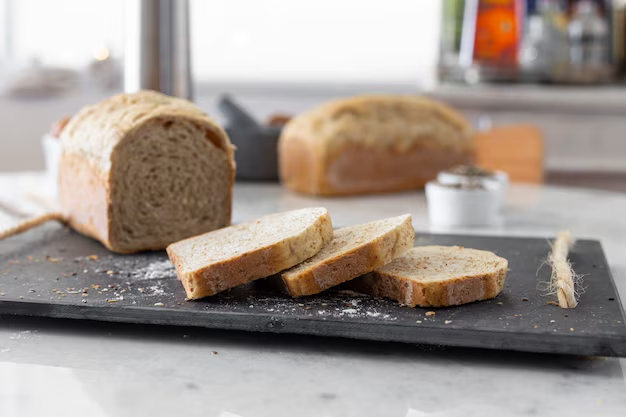Is Rye Bread a Safe Choice for Diabetics? Here’s What You Need to Know
If you or a loved one is managing diabetes, choosing the right foods is vital to maintaining safe blood sugar levels. Rye bread often comes up as a potential choice on the diabetic menu. But is it a healthy option? Let's explore.
Why Rye Bread Stands Out
Rye bread distinguishes itself from other bread types primarily through its lower glycemic index (GI), which measures how quickly carbohydrates in food convert to glucose in the blood. Typically, rye has a moderate to low GI compared to white or whole wheat bread. This means it causes a slower, more gradual rise in blood sugar levels, making it a potentially safer option for diabetics.
The Nutritional Benefits of Rye Bread
High Fiber Content: Rye bread is high in dietary fiber, crucial for digestion and blood sugar management. This fiber can help delay the absorption of sugar into the bloodstream, which stabilizes glucose levels.
Rich in Nutrients: Rye is packed with essential nutrients, including vitamins B and E, iron, and magnesium, which support overall health and may boost the management of diabetes-related symptoms.
Improves Heart Health: Studies suggest that consuming rye may contribute to improved cholesterol levels and heart health, a significant consideration for diabetes management.
Considerations for Diabetics
Although rye bread has benefits, it's not a one-size-fits-all solution. Here are a few things to consider:
Individual Responses Vary: Some diabetics may find rye bread causes a more significant blood sugar spike than expected. Monitoring your blood sugar before and after eating rye bread can help determine its effects on your body.
Portion Control is Key: Overconsumption of any carbohydrate, even those with a low GI, can lead to blood sugar spikes. Manage portion sizes carefully to maintain balance.
Choose Whole-Grain Rye Bread: Sometimes, rye bread is made with refined flour, which can negate its potential health benefits. Always opt for whole-grain rye without added sugars.
Transitioning to a Healthier Lifestyle
Incorporating rye bread into your diet can be a smart choice for managing diabetes. However, it’s one piece of a larger puzzle. Addressing overall lifestyle factors such as regular exercise, stress management, and a balanced diet rich in whole foods is invaluable.
For those needing financial assistance to afford more nutritious foods or manage healthcare costs, several resources might be helpful. Similarly, educational opportunities in nutrition and diabetes management could provide the knowledge needed to make informed dietary choices.
Here’s a quick guide to some potential resources:
💵 Financial Assistance:
- Supplemental Nutrition Assistance Program (SNAP): Offers funds to purchase healthy foods.
- Medicare/Medicaid: Provides healthcare assistance, including for diabetes management.
- Community Food Banks: Local organizations often offer free or low-cost groceries.
💳 Credit Solutions:
- Medical Credit Cards: Can help spread the cost of medical expenses over time.
- Low-Interest Personal Loans: An alternative for covering larger medical bills.
📚 Educational Opportunities:
- Local Diabetes Education Programs: Many hospitals offer free or low-cost diabetes management classes.
- Online Courses on Nutrition: Platforms like Coursera and edX offer courses focused on healthy eating and living with diabetes.
Remember, embracing a healthier diet with options like rye bread could assist in managing diabetes more effectively. While making these changes, tap into financial and educational resources designed to ease your journey toward better health.
